
 SEBASTIAN VEGA, UNIVERSITY OF PENNSYLVANIA
SEBASTIAN VEGA, UNIVERSITY OF PENNSYLVANIA
Biochemical gradients to screen hydrogel formulations for cartilage tissue engineering
Due to limitations in the healing capacity of cartilage and high prevalence of osteoarthritis, the loss and failure of cartilage impose a significant social and economic burden on society. Standard treatment options are limited and have prompted the development of alternative tissue engineering-based approaches, specifically those involving stem cell-based biomaterial constructs. Mesenchymal stem cells (MSCs) are somatic cells that can differentiate into chondrocytes (cartilage-producing cells) under the right combination of physical and biochemical signals. However, it remains challenging to screen the cooperative effects of multiple parameters on chondrogenic differentiation. Here we describe a simple, high-throughput hydrogel platform with biochemical gradients of peptides that mimic cell adhesion (RGD) and cell-cell (HAV) signals present during cartilage development. We found that chondrogenesis was spatially varied in these hydrogels based on the local biochemical environment, and from 100 formulations analyzed, we identified HAV/RGD formulations that enhance the expression of chondrogenic markers. These findings instructed the design of discrete MSC-containing hydrogels, resulting in significant cartilage-specific matrix production within these constructs. In summary, this system allows for the screening of cellular microenvironments in a rapid and cost-effective manner that can be applied to a broad range of tissue engineering applications.
 OSCAR CARRASCO-ZEVALLOS, DUKE UNIVERSITY
OSCAR CARRASCO-ZEVALLOS, DUKE UNIVERSITY
4D intraoperative optical coherence tomography to guide human eye surgery
Ophthalmic surgery is one of the most common surgeries in the US, but it is also one of the most difficult surgeries to perform, requiring precise three-dimensional manipulation of delicate tissue at sub-millimeter spatial scales. To perform eye surgery, surgeons currently use operating microscopes that limit visualization of the three-dimensional surgical field to an en face perspective, or “bird’s eye view,” which hinders the surgeon’s ability to maneuver instruments in depth and to evaluate alterations to the three-dimensional tissue structure. Optical coherence tomography (OCT) is a non-invasive three-dimensional imaging modality that is well suited to image the human eye in vivo with micrometer class spatial resolution, but its use has been largely restricted to the clinical office setting. This talk will describe intraoperative OCT (iOCT) systems that enable, for the first time, real time 4D (three-dimensional imaging over time) visualization of live human eye surgery to overcome the limitations of the conventional operating microscope. First, I will describe the design of a first generation 4D iOCT that integrates into a commercial operating microscope and a custom heads-up display to relay the acquired images to the surgeon in real time. This device was tested in simulated surgery and was demonstrated to improve the accuracy of widely used surgical maneuvers. The potential of 4D iOCT to improve human surgical visualization was then tested in a clinical study encompassing over 150 human eye surgeries, in which 4D iOCT revealed previously unidentified lesions during routine surgery. Next, I will describe a second generation 4D iOCT system that employs novel data acquisition, processing, and visualization techniques to image eye surgery at near video-rates (15 high definition volumes per second). Enhanced intraoperative visualization afforded by 4D iOCT may improve current surgical practice and facilitate the development of novel procedures that require manipulation of sub-surface ocular tissue, such as implantation of retinal prosthetics and delivery of therapeutics to restore vision.
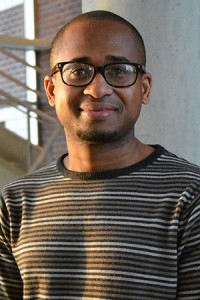 DENNIS JONES, MASS GENERAL/HARVARD
DENNIS JONES, MASS GENERAL/HARVARD
The Effect of Bacterial Infection on the Lymphatic System
Methicillin-Resistant Staphylococcus aureus (MRSA) is a major cause of morbidity and mortality worldwide and is a frequent cause of skin and soft tissue infections (SSTIs). Associated with SSTIs is a decline of lymphatic vessel function, increasing the likelihood for recurring bacterial infections and lymphedema. However, the mechanism of infection-induced lymphatic dysfunction remains unclear. To interrogate this, we utilized a model of localized MRSA infection. Intravital imaging revealed both an acute reduction in lymphatic contractility and lymph flow after infection as well as chronic lymphatic impairment long after the MRSA is cleared and inflammation is resolved. Attempts to inhibit host inflammation were not able to rescue lymphatic function during and after MRSA infection. Thus we are focusing our attention on MRSA-produced products, including MRSA virulence factors. Using proteomic approaches we are identifying and testing candidate virulence factors in order to determine the mechanism of the long term inhibition of lymphatic pumping following MRSA infection.
 CATERA WILDER, UCLA
CATERA WILDER, UCLA
Investigating stimulus specific IFN-induced ISGF3 dynamics using single-cell reporter tools
The innate immune response is responsible for mounting the first line of defense against pathogens. The key coordinating cytokines responsible for this response are the type I and type III interferons (IFN). While both the type I and III IFN family suppress viral and bacterial spread, only type I IFN induces antiproliferative effects. Some of these differences in biological function may be accounted for by cell-type-specific expression of the particular IFN family members; however, others pertain to the same cell type and are mediated by the highly diverse biochemical functions of interferon-stimulated genes (ISGs) induced by the IFN inducible transcription factor ISGF3. These differential physiological functions motivated transcriptome analysis following stimulation with different IFNs, but no clear picture of how differential physiological functions are mediated by differential activation of ISGs has emerged. Other inducible transcription factors, such as NFκB and p53, have stimulus-specific nuclear translocation dynamics that mediate their stimulus-specific functions. Interestingly, while IFN gene regulation has been studied, there are no previous studies of ISGF3 activity dynamics, and no quantitiative understanding of the mechanisms that control activation and inactivation.
Thus, I am developing a mathematical model of ISGF3 translocation activation when cells are exposed to type I and III IFNs, and relating the type of IFN exposure to transcriptional control of ISGs and the level of protection from viral or bacterial pathogens. Thereby identifying key features of ISGF3 activation that mediate effective resistance responses. Preliminary results suggest that stimulation with either type I or III IFN family result in variable ISGF3 induction profiles. To study the dynamics at a single cell level, an ISGF3 reporter cell line is being developed and will allow us to investigate type I and type III IFN-induced ISGF3 dynamics and its effect on viral protection and ISG gene expression.
 ABBYGAIL FOSTER, STANFORD
ABBYGAIL FOSTER, STANFORD
Protein-engineered hydrogels for cell transplantation in a mouse model of peripheral arterial disease
Peripheral Arterial Disease (PAD) is characterized by dysfunction of vascular endothelial cells (ECs), commonly impacting blood flow to the legs and resulting in foot ulcers, gangrene, heart attack, stroke, and lower limb amputation. Recent preclinical studies suggest that transplantation of ECs via direct injection into the affected limb can result in significantly improved blood circulation. However, the clinical adoption of this therapy has been limited by low cell viability and poor transplanted cell function. To address these limitations, we have developed an injectable hydrogel termed SHIELD (Shear-thinning Hydrogel for Injectable Encapsulation and Long-term Delivery). In this study, we demonstrate improved acute viability of encapsulated induced pluripotent stem cell-derived endothelial cells (iPSC-ECs) following syringe injection in an in vitro model of transplantation. Additionally, SHIELD improves iPSC-EC proliferation in in vitro hypoxic culture conditions, which mimic the cellular environment of PAD. Using a murine hind limb ischemia model for PAD, we demonstrate enhanced iPSC-EC retention in vivo following transplantation in SHIELD. Further, histological explants, which were analyzed for various parameters including necrosis, inflammation, neovascularization, and tissue regeneration, suggest that encapsulating iPSC-ECs in SHIELD may influence the paracrine angiogenic signaling of transplanted cells, leading to improved re-vascularization of the ischemic limb.
 ISHMAIL ABDUS-SABOOR, UNIVERSITY OF PENNSYLVANIA
ISHMAIL ABDUS-SABOOR, UNIVERSITY OF PENNSYLVANIA
Genetic Interrogation of Neural Circuitry for Pain and Itch
Abstract: Millions of Americans suffer debilitating forms of long-lasting chronic pain or itch, oftentimes with inadequate treatment options. Therapeutic interventions are scarce, ineffective, and act largely non-specifically because the neural circuit mechanisms that underlie chronic pain or itch remain largely obscure. In our lab we use modern neurobiology techniques in mice to interrogate cell and molecular mechanisms for itch and pain transmission. In one study, we used sparse genetic labeling and optogenetics with a population of pain-sensing neurons (nociceptors) and revealed novel region-specific organization, physiological properties, and activation thresholds of these nociceptors. In another study, we genetically labeled a population of itch-sensing neurons and revealed a phenotypic switch between itch and pain sensation following chronic inflammatory pain. In brief, with genetic interrogation of sensory neurons for pain and itch, coupled with neuroanatomy, electrophysiology, optogenetics, and animal behavior, we are revealing novel features and wiring mechanisms for pain and itch sensation.
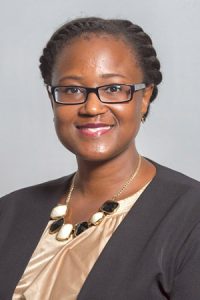 CHERYL BELL, UNIVERSITY OF PITTSBURGH SCHOOL OF MEDICINE
CHERYL BELL, UNIVERSITY OF PITTSBURGH SCHOOL OF MEDICINE
Evidence of Annular Gap Junction Processing and Cytoplasmic Interactions
Gap junction-mediated communication is essential for proper regulatory function in most cells of the body. Gap junction protein, connexin, are assembled into hemichannels and transported to the plasma membrane, where they can dock with hemichannels from adjacent cells and form gap junction channels. Clustering of these channels result in the formation of gap junction plaques, which allow molecules to communicate between connecting cells. It is well-known that gap junction plaques can be removed from the surface by clathrin-mediated internalization that results in the formation of annular gap junction vesicles. However, the subsequent processing of the annular gap junction vesicles is poorly understood. Our lab has analyzed annular gap junction processing to determine their fate and to identify organelles and molecules that may associate with annular gap junction vesicles. A human adrenal cell line (SW-13) which expresses endogenous connexin 43 (Cx43) or GFP-Cx43 gap junction proteins was used. Of the annular gap junctions tracked by time-lapse imaging, 58% underwent fission, 19% appeared to re-associate with the plasma membrane, 11.5% fused with other organelles and 11.5% disappeared. Annular gap junctions, viewed with immunofluorescence co- localization procedures, were observed to be associated with lysosomes and mitochondria. Based on ultrastructural analysis, the percentage of annular gap junctions seen fused with lysosomes was 2.6% ± 0.6, and 5.2% ± 1.1 associated with mitochondria. The annular gap junction/lysosome association is consistent with annular gap junction formation being a mechanism for eliminating Cx43 gap junction proteins from the cell surface. However, the apparent return of annular gap junctions to the plasma membrane would suggest that this internal pool of connexin may provide a source for rapid formation of new gap junctions plaques. It is tempting to speculate that the fission of annular gap junction vesicles facilitates gap junction protein degradation and/or return to the cell membrane. Further, since mitochondria are known to provide cell energy and to sequester calcium, it is possible that the observed associations of annular gap junctions with mitochondria facilitate annular gap junction processing including the sequestering of calcium, and regulation of fissions. Information on the annular gap junction processing will increase our understanding of gap junction degradation, turnover and cell-cell communication. Supported by NSF grant #MCB-1408986
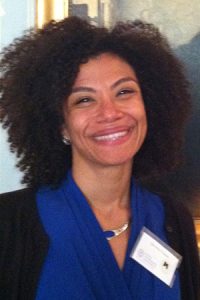 SIMMIE FOSTER, HARVARD MEDICAL SCHOOL
SIMMIE FOSTER, HARVARD MEDICAL SCHOOL
Neuroimmunity in physiology and pathology: studies in pain, depression, and inflammation
Many human diseases including depression, pain, metabolic syndrome, and cancer, are disorders of chronic inflammation. We are finding inflammation is a result of complex, bidirectional communication between the nervous system and the immune system. While immune cells have long been known to secrete cytokines that act on nociceptors (pain neurons) leading to increased pain, there’s also communication in the other direction; nociceptors seem to play a special role in directing immunity. Silencing these neurons or ablating them reverses signs of airway disease in a mouse model of asthma, while activating them has potential to boost memory responses. Studying the interaction between these two systems in pathology and physiology will generate new insights into inflammation and opportunities for managing chronic disease, including neuropsychiatric diseases such as depression.
 BRIAN GIBBS, JOHNS HOPKINS UNIVERSITY
BRIAN GIBBS, JOHNS HOPKINS UNIVERSITY
Hedgehog Proteins Are Key Microenvironmental Factors Necessary for the Expansion of Cardiac Progenitor Cells
Cardiac progenitor cells (CPCs) are multipotent cells used to form the heart during embryogenesis, and abnormal regulation of CPCs is closely associated with the etiology of congenital heart defects. Particularly, proper regulation of CPC number and fate is essential for the ensuing heart growth. We previously demonstrated that CPCs expand without cardiac differentiation in the second pharyngeal arch (PA2) and that PA2 cells promote their renewal and expansion. To understand how the event is implemented by PA2 cells, we conducted a signaling pathway array and found that hedgehog (Hh) signaling, an important developmental regulator, is active in the PA2. To test the non-cell autonomous role of Hh signaling in vivo, we deleted Sonic Hh (Shh) and Indian Hh (Ihh), two compensatory Hh ligands expressed in the PA2, in the non-cardiac cells region of the pharyngeal arch with Ap-2alphaCre and Shhflox/Ihhflox mice. The deletion resulted in a severely hypoplastic heart. Moreover, CPCs treated with Shh showed an increase in CPC number, whereas cyclopamine (Hh inhibitor)-treated CPCs showed a significant reduction in CPC expansion. Surprisingly, the deletion of Numb in ES cells negatively regulated Gli3. In conclusion, our data suggest that Hedgehog signaling mediates the microenvironmental role of PA2 cells for CPC expansion during early cardiac development and this process is regulated by Numb.
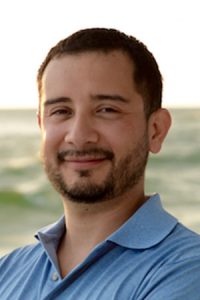 ARNOLD GOMEZ, JOHNS HOPKINS UNIVERSITY
ARNOLD GOMEZ, JOHNS HOPKINS UNIVERSITY
Tools and Applications in Image-Based Biomechanics
Tissue motion elicits multiple vital processes and can drastically affect organ function; thus, establishing clear causal relationships between how tissue moves and what causes motion can be useful for innovating solutions to pressing health problems. For some time, image-based biomechanics has proven useful in the arena of computational modeling using subject-specific data from medical imaging. Recently, we have been using computational tools to stretch the limits of imaging hardware and acquisition windows. Combining techniques in image processing, continuum mechanics, and image acquisition via magnetic resonance imaging, we have been able to: (1) Observe 3D brain deformation during impact in vivo, (2) discover new compensatory mechanisms in the heart, and (3) approximate muscular contraction during speech generation. So far, our results point to key anatomical differences and other idiosyncratic parameters that have a direct effect in tissue deformation patterns. For instance: the size of the brain influences the amount and the timing of axonal deformation during rotational acceleration, and changes in right-ventricular fiber distribution appear to boost ejection fraction during pulmonary hypertension. We also have demonstrated a versatile machine-learning strategy to interpret tongue motion during speech generation even after changes associated with tumor removal. Future research focuses on confirming these trends and establishing connections for possible preventive or clinical decision-making.
 ALBA LUENGO, MIT
ALBA LUENGO, MIT
Methylglyoxal production is a liability of cancer metabolism
Altered metabolism is a common feature of cancer that contributes to tumorigenesis and malignant proliferation. A consequence of cancer cell metabolism is the production of intrinsically reactive molecules, including methylglyoxal, a metabolite that irreversibly and covalently modifies proteins and nucleic acids. We have found that metabolites associated with methylglyoxal metabolism accumulate in non-small cell lung cancers (NSCLC) compared to normal lung, and that methylglyoxal production is a consequence of increased glycolytic flux, a known hallmark of tumor cell metabolism. We find that ablation of the methylglyoxal detoxification enzyme glyoxalase I (Glo1) potentiates methylglyoxal-associated toxicity and results in accumulation of protein adducts and DNA-protein crosslinks. Finally, loss of Glo1 impairs tumor proliferation, suggesting that methylglyoxal detoxification could be a vulnerability introduced by the glucose metabolism of cancer cells.
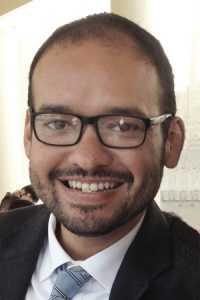 DENNIS MONTOYA, UNIVERSITY OF CALIFORNIA LOS ANGELES
DENNIS MONTOYA, UNIVERSITY OF CALIFORNIA LOS ANGELES
Computational reconstruction of the tissue cellular
microenvironment
Epigenetic and transcriptomic analysis of clinical samples are common observational study approaches to identify molecular pathways for intervention or diagnosis/prognosis between cases and controls from disease populations. However, the variation in the cellular composition across tissue samples can confound differential comparisons between populations. In fact, the type and magnitude of immune cells within the tissue microenvironment are now appreciated to reflect the disease state. We have developed computational approaches for the quantification of cell types and molecular pathways from either RNA expression or DNA methylation data. I’m currently applying these methods to reconstruct the relative cellular frequencies and their dynamic interactions leading to diagnosis and pathway discovery of tuberculosis, leprosy, cancer, and metabolic syndrome patient cohorts.
 ERIKA MOORE, DUKE UNIVERSITY
ERIKA MOORE, DUKE UNIVERSITY
Macrophages Influence Vessel Formation in 3D Bioactive Hydrogels
Macrophages, cells of the immune system, act in a variety of roles within tissue development and repair. Moreover, macrophages can play a critical and beneficial role in blood vessel development. Within the field of tissue engineering, engineered tissues are often limited in size due to lack of vascularization. Thus, macrophages may serve as a novel cell source to support vessel development within engineered tissues. While cells can be cultured on 2D surfaces, 3D cell culture systems are better mimics of tissue conditions as they can allow cells to migrate, interact with the extracellular matrix, and form 3D structures, such as blood vessels. In particular, this work demonstrated that macrophages, encapsulated within a 3D culture system composed of poly (ethylene glycol) (PEG), enhance vessel formation. PEG is used as our 3D culture system due to its tissue-like mechanical properties and its resistance to protein adsorption. These properties allow a high degree of control over cell interactions within the PEG hydrogel. To render the PEG hydrogel capable of cell adhesion, we covalently immobilized a cell adhesive peptide, RGDS (a peptide derived from fibronectin), into the PEG hydrogel. We also rendered the hydrogel sensitive to cell mediated degradation by incorporating a matrix-metalloprotease-2/9 (MMP-2/9) sensitive peptide into the backbone of the PEG hydrogel. In this work, macrophages and endothelial cells were encapsulated and cultured in 3D within the 3D PEG-based hydrogel. 3D vessel structures that formed within the hydrogel were analyzed; we found that macrophages, encapsulated with endothelial cells, enhanced vessel volume by nearly 2 fold when compared to endothelial cells alone. Macrophages also formed close cell-cell associations with the endothelial cells. These associations were classified as a support-cell like interaction and a cell-chaperoning interaction. We also probed the roles of macrophage phenotypes in order to determine the influence of each phenotype on macrophage-enhanced vessel development. Macrophages are known to have 2 extremum phenotypes: M1 macrophages, which are thought to be pro-inflammatory, and M2 macrophages, which are thought to be pro-tissue healing. We found that M2-stimulated macrophages, when encapsulated with endothelial cells, enhanced vessel volume in the hydrogel nearly 3 fold in comparison to endothelial cells alone. We also found that M2-stimulated macrophages were more likely to interact with endothelial cells when compared to M1-stimulated macrophages. Thus, macrophages, specifically M2-stimulated macrophages, are capable of enhancing vessel development in 3D within PEG-based hydrogels. This work supports the notion that macrophages can serve to enhance vascularization of tissue engineered constructs.
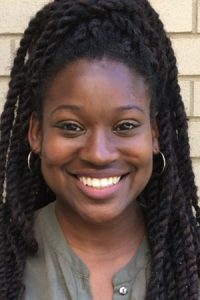 IVANA PARKER, CENTERS FOR DISEASE CONTROL AND PREVENTION
IVANA PARKER, CENTERS FOR DISEASE CONTROL AND PREVENTION
The impact of pre-exposure prophylaxis on HIV antibody maturation
Pre-exposure prophylaxis (PrEP) is an effective HIV prevention tool, though efficacy is dependent upon adherence. It is important to characterize the impact of PrEP on seroconversion and antibody maturation in persons who become infected during treatment to better understand its effect on HIV diagnosis and disease progression. We have evaluated the effects of PrEP on seroconversion, antibody titer, and maturation in a cohort of injection drug users from the Bangkok Tenofovir Study (BTS). In addition, we have developed a multiplex assay which allows for investigation of mucosal antibody maturation in nonhuman primate models using simian/human chimeric viruses (SHIVs). This multiplex assay identified unique IgG/IgA antibody response patterns in the vaginal mucosa and plasma and delineated differences in antibody responses during acute infection in a breakthrough animal that became infected despite receiving an antiretroviral biomedical intervention. Our studies provide important data to inform diagnostic strategies, especially for persons on PrEP, as early and accurate identification of HIV infection is critical to prevent ongoing transmission and to facilitate early initiation of care.
 MARGARET PRUITT, UNIVERSITY OF KANSAS MEDICAL CENTER
MARGARET PRUITT, UNIVERSITY OF KANSAS MEDICAL CENTER
In Flask Evolution Reveals Alternative Telomerase RNA Templates that Impact Telomerase Activity
The ability to avoid replicative senescence is a hallmark of malignant transformation. Over 85% of all cancers acquire this capability by activating telomerase, a specialized reverse transcriptase. Telomerase uses an internal telomerase RNA template to extend chromosome ends with telomeric DNA repeats, thereby delaying cell cycle arrest. Although telomerase is a potentially powerful anti-tumor therapeutic target, such therapies are not yet mainstays of cancer treatment. To better understand the role of the RNA template sequence in telomerase activity and cell survival, we introduced a plasmid library of all 16,384 possible nucleotide combinations of the seven nucleotide Schizosaccharomyces pombe telomerase RNA (ter1) template into a ter1 deletion strain. These cells were maintained through consecutive growth-dilution cycles in liquid culture. As variant telomere repeats were added to the chromosome end, cells with dysfunctional telomeres became outgrown by cells that maintained functional telomeres. As expected, we found that a core sequence, corresponding to nucleotides known to be important for telomere function, was robustly selected for among the most successful templates. Intriguingly, a single nucleotide change in the template conferred a major change in the number of consecutive repeats added to the chromosome end. Additionally, we provide evidence for the first time that template mutations can result in a three to four nucleotide alignment shift between the telomeric end and the telomerase RNA to confer templated, non-wild type repeats. These findings demonstrate surprising plasticity in the telomerase-telomere interaction and further implicate the template as a key mediator of telomerase activity, telomere function, and cell survival.
 KIZZMEKIA CORBETT, NIH VACCINE RESEARCH CENTER
KIZZMEKIA CORBETT, NIH VACCINE RESEARCH CENTER
Advancing Towards a Pan-Coronavirus Vaccine Concept
Endemic human coronavirus (CoV) infections, such as HKU1-CoV, typically manifest as mild respiratory disease, however zoonotic transmission of coronaviruses has been associated with severe respiratory distress with high fatality rates. The 2002-2003 SARS-CoV epidemic resulted in 8098 cases and 744 deaths, and MERS-CoV has now attributed to 1638 cases and 587 deaths. As newly emerging CoVs are thought to be poised for human emergence, there is a need to define a general CoV vaccine solution. CoV spike (S) proteins mediate cellular attachment and membrane fusion and are therefore the target of protective antibodies. Large size and extensive glycosylation previously hindered structural studies of the full CoV S ectodomain, thus preventing molecular understanding of S function and limiting vaccine development. Stabilizing other enveloped viral class I fusion proteins in the functional prefusion conformation has resulted in highly immunogenic protein subunit candidate vaccines. To that end, we sought to rationally design stabilized prefusion CoV S vaccine antigens. We solved the 4.0 Å resolution structure of the trimeric HKU1 S protein, using single-particle cryo-electron microscopy. Our HKU1 S structure was the first full prefusion S ectodomain structure from any human CoV, and uncovered several unique molecular details. For example, the receptor-binding subunits, S1, rest above the fusion-mediating subunits, S2, preventing their conformational rearrangement. Based on atomic-level details revealed in our prefusion HKU1-CoV S structure, stabilizing mutations were identified to maintain MERS-CoV S as a trimer in its prefusion conformation (pre-S). In mice, we show pre-S elicits more robust neutralizing antibodies to multiple MERS strains than S1 monomer or wild-type versions of S trimers and renders protection against lethal MERS-CoV challenge. MERS pre-S immunization induces neutralizing antibodies to multiple domains of the S trimer, including regions outside of the receptor-binding domain (RBD). As analogous mutations effectively stabilize HKU1-CoV, SARS-CoV, and other CoV spikes in the pre-S conformation, these studies provide a foundation for structure-based design of pan-coronavirus vaccines.
 TERESA RAMIREZ, BROWN UNIVERSITY
TERESA RAMIREZ, BROWN UNIVERSITY
Aging aggravates alcoholic liver injury and fibrosis in mice by down-regulating sirtuin 1 expression
Aging is known to exacerbate the progression of alcoholic liver disease (ALD), but the underlying mechanisms remain obscure. The aim of this study was to use a chronic plus binge ethanol feeding model in mice to evaluate the effects of aging on alcohol-induced liver injury. Methods: C57BL/6 mice were subjected to short-term (10days) ethanol plus one binge or long-term (8weeks) ethanol plus multiple binges of ethanol. Liver injury and fibrosis were determined. Hepatic stellate cells (HSCs) were isolated and used in in vitro studies. Results:Middle-aged (12-14months) and old-aged (>16months) mice were more susceptible to liver injury, inflammation, and oxidative stress induced by short-term plus one binge or long-term plus multiple binges of ethanol feeding when compared to young (8-12weeks) mice. Long-term plus multiple binges of ethanol feeding induced greater liver fibrosis in middle-aged mice than that in young mice. Hepatic expression of sirtuin 1 (SIRT1) protein was down-regulated in the middle-aged mice compared to young mice. Restoration of SIRT1 expression via the administration of adenovirus-SIRT1 vector ameliorated short-term plus binge ethanol-induced liver injury and fibrosis in middle-aged mice. HSCs isolated from middle-aged mice expressed lower levels of SIRT1 protein and were more susceptible to spontaneous activation in in vitro culture than those from young mice. Overexpression of SIRT1 reduced activation of HSCs from middle-aged mice in vitro with down-regulation of PDGFR-α and c-Myc, while deletion of SIRT1 activated HSCs isolated from young mice in vitro. Finally, HSC-specific SIRT1 knockout mice were more susceptible to long-term chronic-plus-multiple binges of ethanol-induced liver fibrosis with up-regulation of PDGFR-α expression. Conclusions/Summary: Aging exacerbates ALD in mice through the down-regulation of SIRT1 in hepatocytes and HSCs. Activation of SIRT1 may serve as a novel target for the treatment of ALD. Aged mice are more susceptible to alcohol-induced liver injury and fibrosis, which is, at least in part, due to lower levels of sirtuin 1 protein in hepatocytes and hepatic stellate cells. Our findings suggest that sirtuin 1 activators may have beneficial effects for the treatment of alcoholic liver disease in aged patients.
 EDWIN REYES, HARVARD MEDICAL SCHOOL
EDWIN REYES, HARVARD MEDICAL SCHOOL
The role of cd8 t-regulatory cells in cancer
While much effort has been invested in unleashing the therapeutic potential of the immune system towards cancer, immunotherapies have not yet achieved their full potential. This, in part, reflects the highly immunosuppressive tumor-microenvironment associated with infiltration of molecules and cells that dampen the immune response, including T cells. Traditionally, a subset of T cells expressing the cell surface protein, CD4, have been thought of as having immunosuppressive function. However, we have previously identified another T cell lineage capable of regulating and thwarting immune responses. These T cells express a different cell surface protein, CD8, along with a triad of other receptors, which aid in their identification. Although we have recently shown that CD8+ regulatory cells play an important function in preventing destructive immune responses to self-tissue, these cells may become an impediment in the context of cancer, where the goal of the immune system is to destroy malignant cells. However, whether CD8+ T regulatory cells play an immunosuppressive role in the context of cancer is unknown. The aim of our research is to determine if CD8+Tregs are immunosuppressive in cancer. We will accomplish this aim by utilizing bioinformatics technology. Ultimately, determining whether CD8+ Tregs are immunosuppressive in the context of cancer may lead to therapeutic targeting of this process with the end goal of preventing tumor growth.
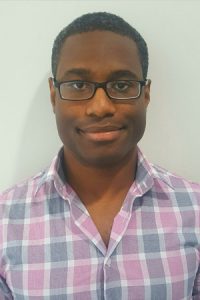 DAVID ASHLEY VAN VALEN, STANFORD UNIVERSITY
DAVID ASHLEY VAN VALEN, STANFORD UNIVERSITY
Visualizing the encoding and decoding of information through signaling networks in single cells
Living systems use signaling networks to encode and decode information about their environment. Recent work has demonstrated that this information is encoded in the dynamics of these networks, but the mechanisms for how these dynamic signals are decoded remain poorly understood. Understanding how these signals are decoded is difficult because the encoding varies significantly from cell to cell, the dynamics can only be viewed with live-cell imaging, and the end result is often an unobservable phenotype. In this talk, I present work showing how this challenge can be met by drawing solutions from the interfaces between the fields of imaging, genomics, and machine learning. I show that by using deep learning, it is possible to identify single cells in microscope images for a variety of cell types spanning the domains of life, and that the improved accuracy of this approach offers the possibility of automating the quantification of live-cell imaging experiments. I also present work integrating live-cell imaging and single cell sequencing technologies. I apply this method to quantify the link between the dynamics of the innate immune master transcription factor NF-κB and gene expression. I identify several distinct gene expression patterns that are correlated with NF-κB dynamics, establishing a functional role for NF-κB dynamics in determining cellular phenotypes. Applications of this approach to other biological systems hold significant potential for discovery as it is now possible to trace cellular behavior from the initial stimulus, through the signaling pathways, down to genome-wide changes in gene expression, all inside of a single cell.
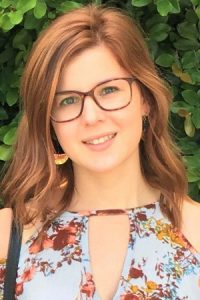 NICOLE SCHARTZ, PURDUE UNIVERSITY
NICOLE SCHARTZ, PURDUE UNIVERSITY
Complement C1q-C3 hyperactivation in epilepsy
Status epilepticus (SE) triggers a myriad of neurological alterations that include unprovoked seizures, temporal lobe epilepsy (TLE), and cognitive deficits. Although SE-induced loss of hippocampal dendritic structures and synaptic remodeling are often associated with this pathophysiology, the underlying mechanisms remain elusive. Recent evidence points to the classical complement pathway as a potential mechanism. Signaling through the complement protein C1q to C3, which is cleaved into smaller biologically active fragments including C3b and iC3b, contributes to the elimination of synaptic structures in the normal developing brain and in models of neurodegenerative disorders. We recently found increased protein levels of C1q and iC3b fragments in human drug-resistant epilepsy. Thus, to identify a potential role for C1q-C3 in SE-induced epilepsy, we performed a temporal analysis of C1q protein levels and C3 cleavage in the hippocampus along with their association to seizures and hippocampal-dependent cognitive functions in a rat model of SE and acquired TLE. We found significant increases in the levels of C1q, C3, and iC3b in the hippocampus at 2-, 3- and 5-weeks after SE relative to controls (p<0.05). In the SE group, greater iC3b levels were significantly correlated with higher seizure frequency (p<0.05). Together, these data support that hyperactivation of the classical complement pathway after SE parallels the progression of epilepsy. Future studies will determine whether C1q-C3 signaling contributes to epileptogenic synaptic remodeling in the hippocampus.

